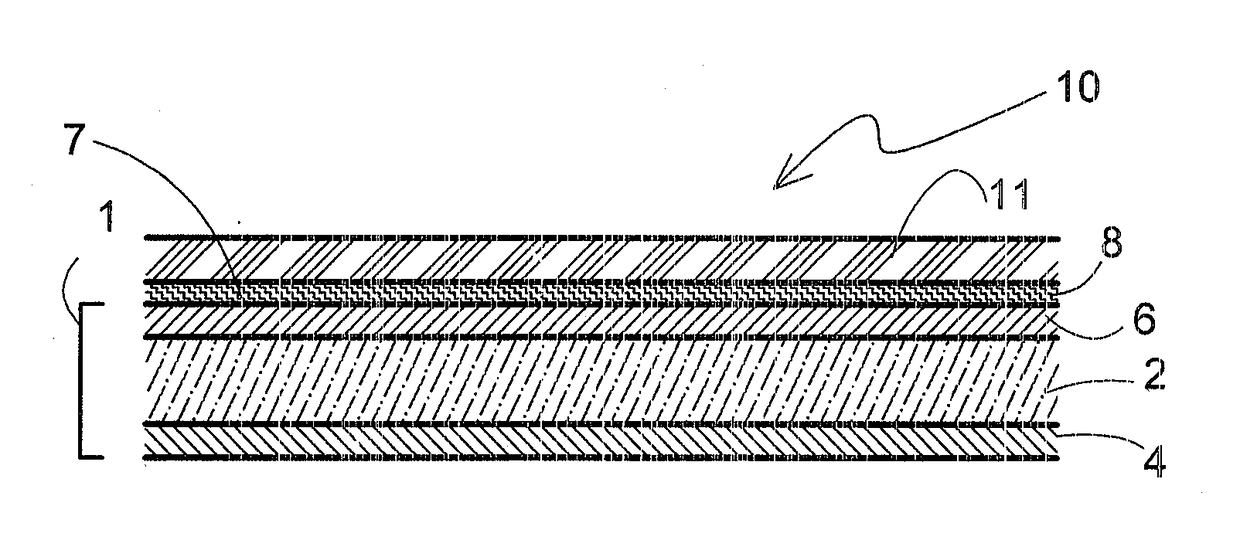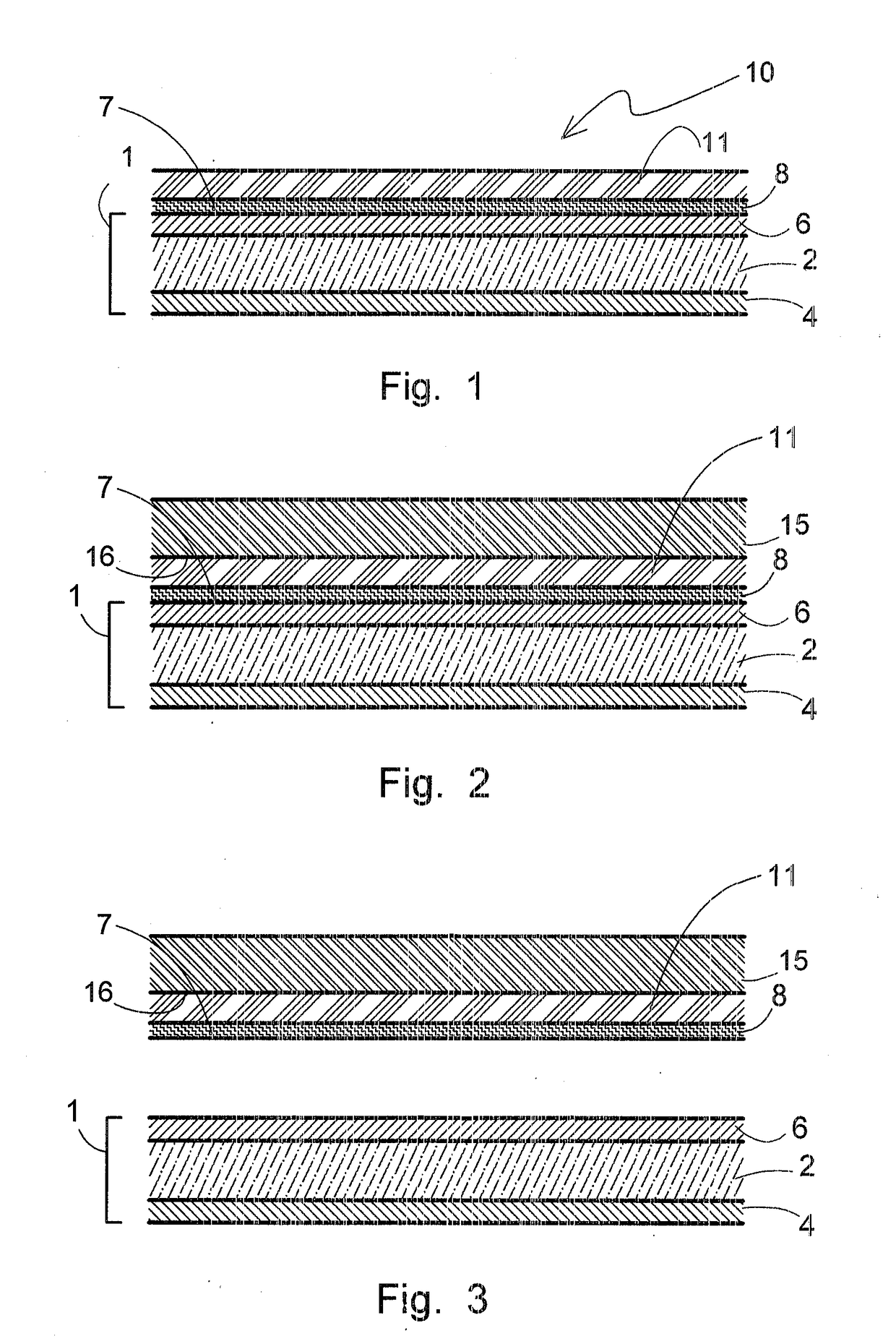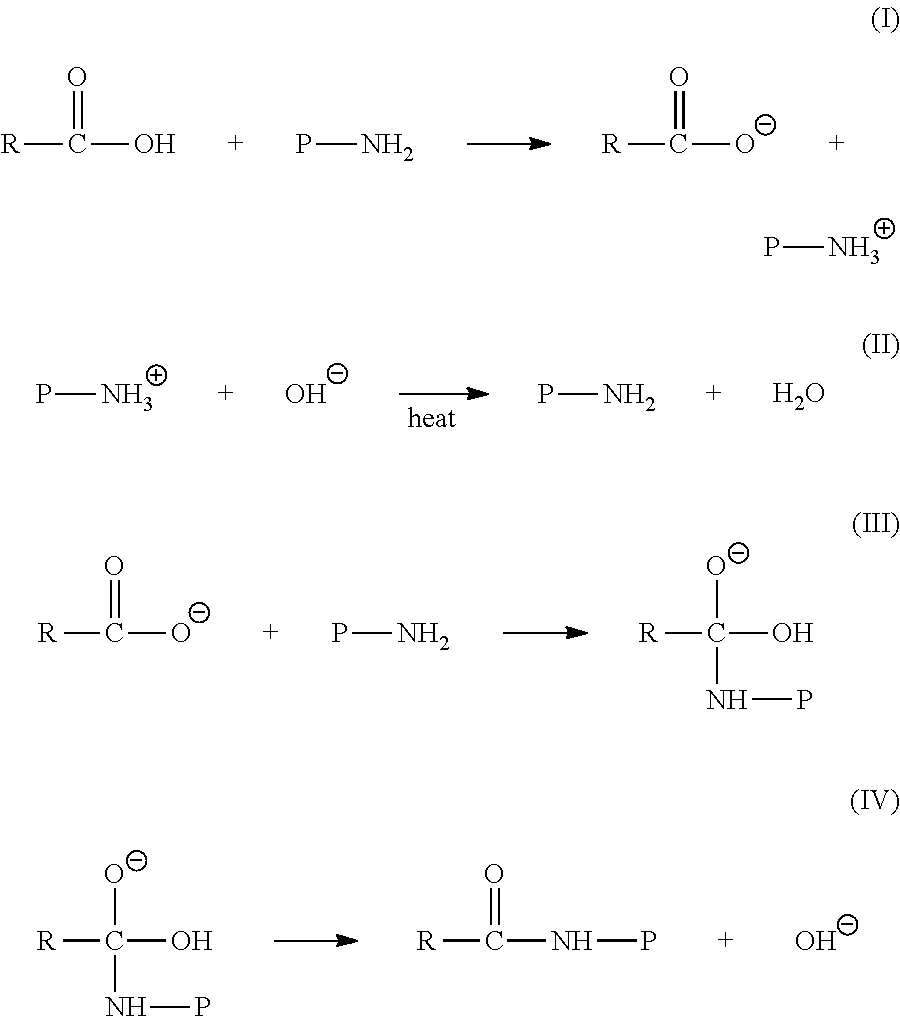Metal transfer film and method of using same
a metal transfer film and film technology, applied in the field of metal transfer film technology, can solve the problems of limiting the potential use of blended products, many processing steps, and carrier film being generally unsuitable for re-us
- Summary
- Abstract
- Description
- Claims
- Application Information
AI Technical Summary
Benefits of technology
Problems solved by technology
Method used
Image
Examples
examples
[0077]This invention is now illustrated by examples of certain representative embodiments thereof, wherein all parts, proportions and percentages are by weight unless otherwise indicated.
[0078]Test Methods
[0079]Thickness: Overall film thicknesses were measured by micrometer using a stack of 10 sheets and dividing the measurement by 10. Measurements were repeated every 9 inches in the transverse direction of the web. The thickness of each coextruded layer of the multilayer film was calculated by the ratio of the corresponding extrusion flow rate to the total extrusion flow rate of all layers.
[0080]Metal Adhesion: Metal adhesion was measured by a 180 degree ethylene acrylic acid polymer peel test consisting of heat sealing an adhesive layer of Dow Primacor® 3300 EAA polymer to the metalized side of the film using a Sentinel Model 12-ASL Sealer at 220° F. and 38 psi for 20 seconds. An Instron® 4200-004 tensile test machine was used to measure the peel force to peel away the metal with ...
examples 1-12
Fabrication of Various Polyester Release Films
example 1
[0088]A two layer PET carrier film was prepared by coextruding adjacent skin layer A and base layer B. Inert filler particles were dispersed in each of the molten polymer feeds to the film forming unit. Thickness and composition of the layers is shown in Table L The concentrations and sizes of the particles gave the outer surfaces of the layers different surface roughnesses. No metal release agent according to this invention was included in the layers. The outer layers had surface resistivity on the order of magnitude of 1016 ohms / sq. Analytical results for this and other examples are presented in Table II. The surfaces of layers A and B also had surface energies typical for PET film as indicated by surface tensions of 40 dynes / cm.
[0089]The surface of skin layer A was metalized with a layer of aluminum of thickness equal to a measured optical density (“OD”) of 2.5 by metal vapor deposition. Metal adhesion of the aluminum layer on layer A was measured as 135 g / in. This is a high adhe...
PUM
| Property | Measurement | Unit |
|---|---|---|
| thickness | aaaaa | aaaaa |
| optical density | aaaaa | aaaaa |
| Ra | aaaaa | aaaaa |
Abstract
Description
Claims
Application Information
 Login to View More
Login to View More - R&D
- Intellectual Property
- Life Sciences
- Materials
- Tech Scout
- Unparalleled Data Quality
- Higher Quality Content
- 60% Fewer Hallucinations
Browse by: Latest US Patents, China's latest patents, Technical Efficacy Thesaurus, Application Domain, Technology Topic, Popular Technical Reports.
© 2025 PatSnap. All rights reserved.Legal|Privacy policy|Modern Slavery Act Transparency Statement|Sitemap|About US| Contact US: help@patsnap.com



